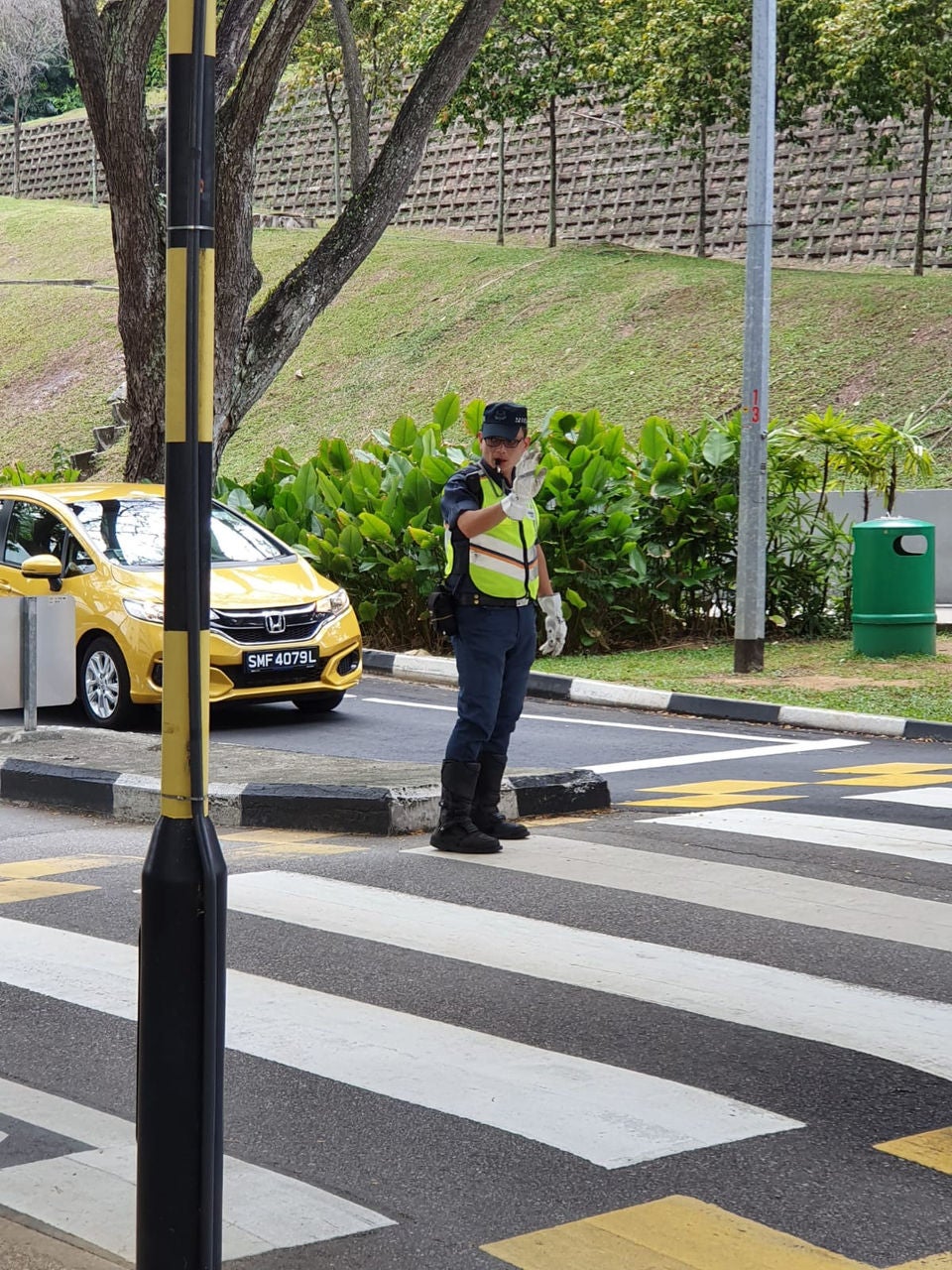
Ambulances not getting patients to A&E on time; patients late for their appointments…find out how colleagues from various departments worked together to manage the major road network changes and ensure smooth traffic on Campus.
2019 had been eventful – with drug recalls and system downtime. When it was time to implement the SGH Campus road network change on 29 December 2019, our Ops Shared Services team was determined to make sure it was free of incidents.
“The road changes are major, affecting the 40,000 people who visit SGH Campus every day. They could potentially lead to congestions affecting public roads, or holding up ambulances. So we decided to bring together the Security units of Campus institutions under Ops Shared Services (Security) to form a Taskforce to manage the initial transition,” said Tan Jack Thian, Group Chief Operating Officer (GCOO).
Colleagues from various institutions worked together to achieve the soft landing
The Taskforce comprised representatives from Group Communications, SingHealth Campus Development, SGH Facilities Management, SGH General Services, and Security of Shared Services. It was led by Mr Lim Chee Pheng, Director Operations of NHCS. He ensured that every member knew what they had to do, with clear roles and responsibilities. That led to the successful implementation of the Traffic Operations Management Plan that was developed by Security Shared Service. It was the collective effort of every member and their single-minded goal of preventing traffic chaos on Campus that made it possible for the team to overcome the odds.

A daily debrief of the Traffic Taskforce, an idea mooted by SingHealth’s COO for Security, Chong Pang Boon (third from right)
Quick Response Team
From a Command Centre in SingHealth Tower, a team kept watch real time on critical locations for the first two weeks after the new road network kicked in on 29 December 2019.
NHCS Director Ops Lim Chee Pheng (second from front) led the Traffic Taskforce which operated out of a Command Centre in SingHealth Tower
It deployed CCTVs at critical locations, and hired extra help in the form of uniformed traffic wardens, marshals and guides.
Busy zebra crossings are manned at peak hours
Besides keeping traffic moving, the team also ensured our roads are safe for both drivers and pedestrians after the changes. It took quick actions such as removing road kerbs to enable easier U-turns for drivers, adjusting safety barriers, and even adding more road signs over the New Year holidays after observing user behaviour over the first days of the changes.
With no signs of major congestion after implementing various traffic measures, the Taskforce decided to stand down after the second week, but only after conducting ‘stress tests” of having the traffic officers present yet not actively manage traffic during peak hours.
SGH Security has since resumed responsibility for the Campus and its roads, keeping watch 24/7 as it has always been doing. Its friendly officers man the busiest zebra crossings on Campus during peak hours, and patrol the Campus on motorbikes day and night. This is in addition to them making rounds on foot in the hospital’s premises.
The SGH Security team has resumed watch 24/7 round the clock on the campus.
In great company
Our Infrastructure Development team started planning for the new road network two years ago, working with consultants and the Land Transport Authority. For the implementation, they ensured facilities and temporary signs were in place to guide motorists to various destinations in SGH Campus.

Lee Shu Hao led a team from the Campus Development Project team to plan and implement the new road network.
Our Communications colleagues had a vital role in the successful implementation of the traffic management plans! Patients and visitors were informed through a wide range of channels. These included media coverage on TV, radio and social media, maps and info kits for staff handling public queries, posters and leaflets. We also reached out to taxi companies and private hire transport providers, as well as online sites that comment on traffic matters. Colleagues running clinical services informed patients through SMSes and letters. They have also been understanding in attending to patients who turned up late because of the changes.
Feedback and queries received by our Call Centres and institutions showed most of our patients and visitors are aware that there are changes. Most called for advice to get to specific locations. With such a significant change in road network and yet there was no adverse events or publicity – That’s a feat!
A concerted effort from everyone on Campus made sure our worst traffic fears did not come true.
We love mail! Drop us a note at lighternotes@sgh.com.sg to tell us what you like or didn’t like about this story, and what you would like to see more of in LighterNotes.













 Get it on Google Play
Get it on Google Play